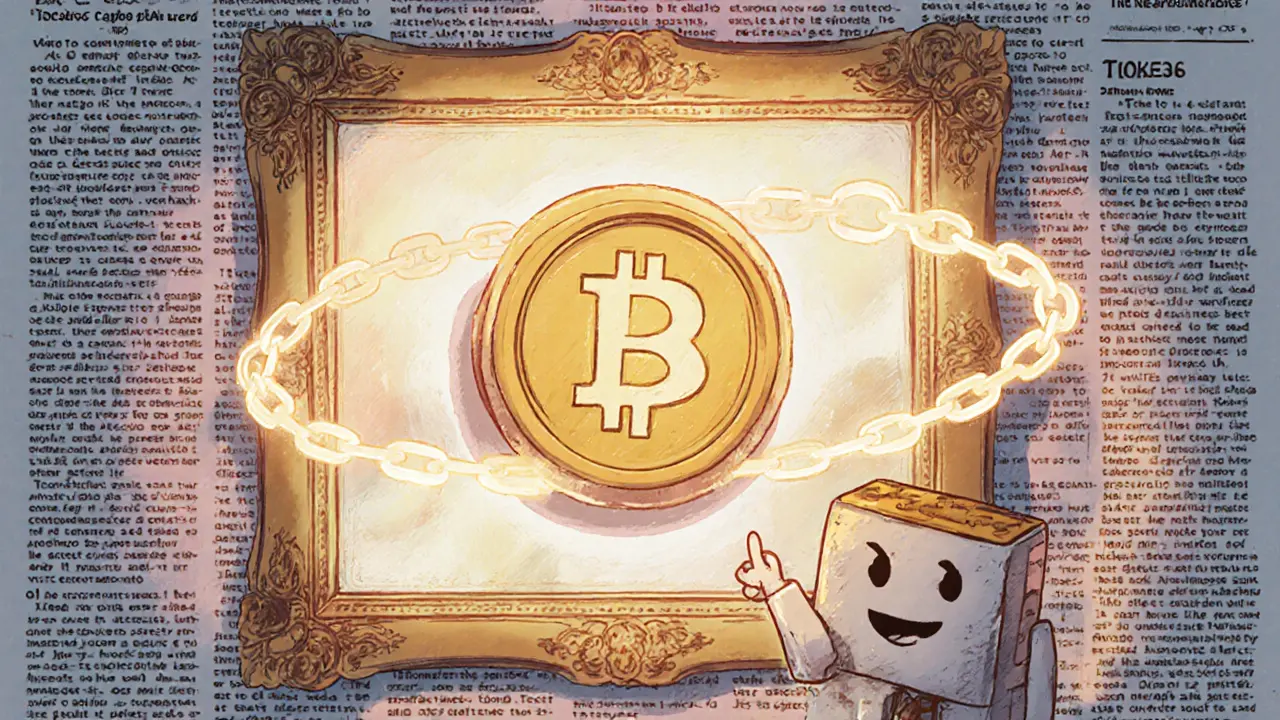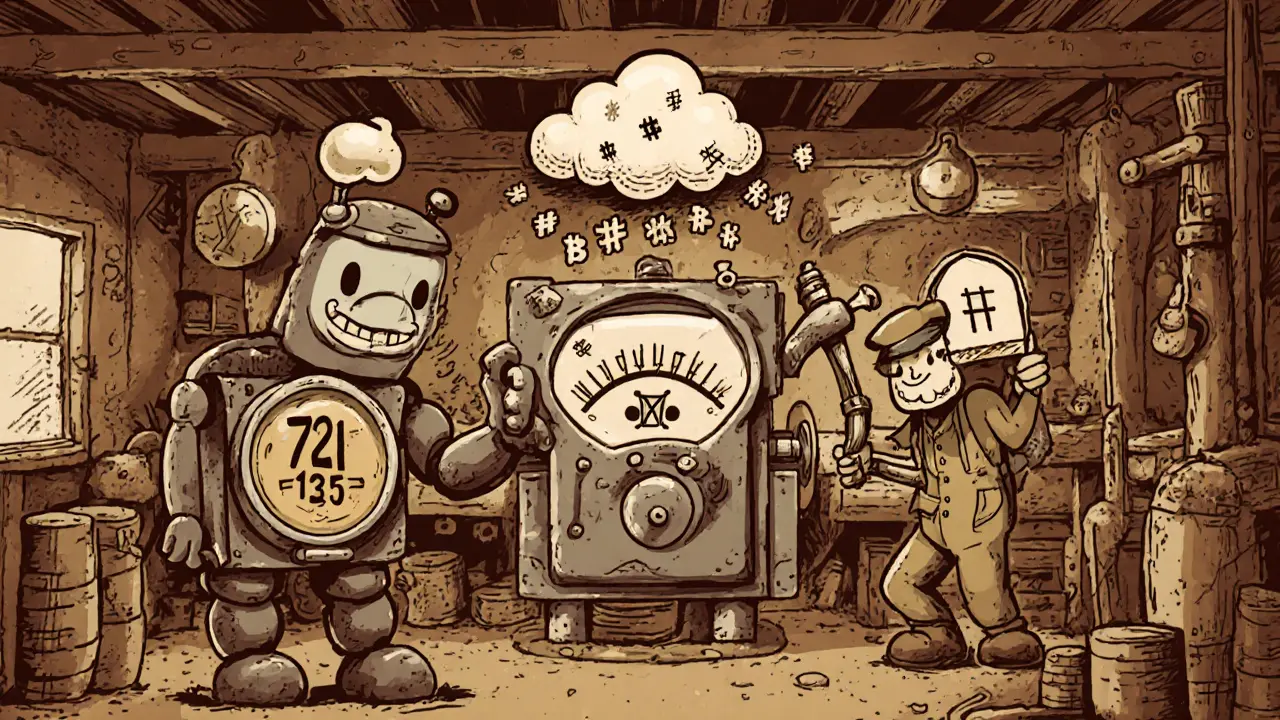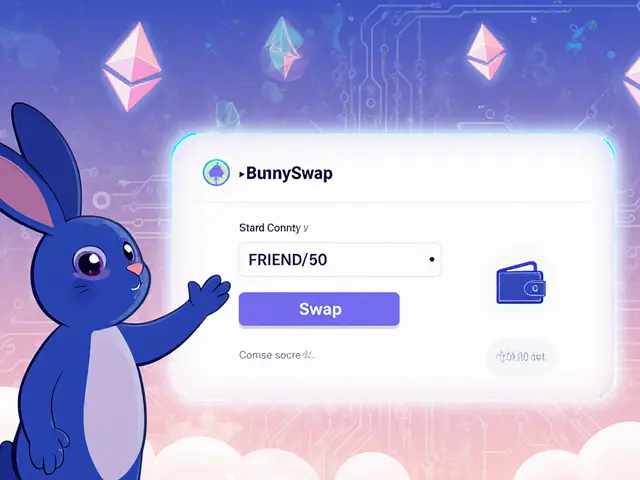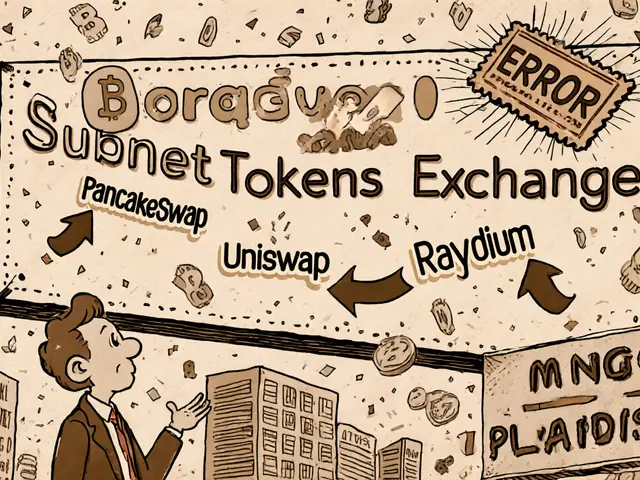
NFT Blockchain Comparison Tool
Gas Fee Estimate
$1.20 - $1.80
Finality Time
13-15 sec
Blockchain Details
Chain: Ethereum
Token Standard: ERC-721 / ERC-1155
Marketplaces: ~1,200
Network Type: Proof-of-Stake
Energy Efficiency: Moderate
Transaction Speed: Fast
Tips for Choosing Your Chain
Ethereum: Best for maximum collector reach and tooling support. Higher fees.
Solana: Ideal for high-volume drops with low fees and fast transactions.
Polygon: Ethereum-compatible with significantly lower gas costs.
Tezos: Eco-friendly with good scalability and low energy consumption.
Ever wondered why a digital art piece can be bought, sold, and proven unique without a central authority? That’s the magic of NFTs. Below you’ll see exactly how they live on a blockchain, what standards keep them unique, and which platforms make minting cheap or pricey.
Key Takeaways
- NFTs are immutable entries on a blockchain, each identified by a unique token ID.
- ERC‑721 and ERC‑1155 are the two most common token standards; the former gives one‑to‑one uniqueness, the latter bundles many tokens in one contract.
- Minting costs depend on the chain’s gas model; Ethereum is expensive, Solana and Polygon are cheap.
- Metadata should live on decentralized storage (IPFS or Arweave) to avoid link rot.
- Choosing the right chain balances transaction speed, fees, and ecosystem support.
What is an NFT?
NFT is a non‑fungible token that represents a unique digital or physical asset on a blockchain. Unlike Bitcoin or Ether, where each unit is interchangeable, an NFT carries a distinct identifier-usually a 256‑bit integer-making it impossible to swap one for another without changing ownership.
This uniqueness lets creators sell verifiable ownership, and buyers gain a tamper‑proof record of provenance. The record lives forever as long as the underlying blockchain remains operational.
How a Blockchain Stores NFTs
Blockchain is a decentralized ledger where each block contains a batch of transactions, linked cryptographically to the previous block. When an NFT is minted, a transaction writes the token’s ID, owner address, and a pointer to its metadata into the chain.
Because every node validates the transaction, the entry becomes immutable. If you query the token ID on a block explorer you’ll see the same owner, creation timestamp, and contract address forever.

Token Standards: ERC‑721 vs ERC‑1155
ERC‑721 is the original Ethereum standard for NFTs, introduced in 2017. It defines a set of functions-ownerOf, transferFrom, tokenURI-that let wallets and marketplaces interact with single‑asset tokens.
ERC‑1155 arrived a year later and lets a single smart contract manage multiple token types, both fungible and non‑fungible. This batch capability cuts gas usage by up to 90% for large drops, which is why many game‑centric projects favor it.
Both standards rely on the same underlying smart contract - a self‑executing code snippet stored on the blockchain. The contract enforces ownership rules, royalty payments, and any custom logic you embed.
Minting an NFT: Steps, Gas, and Wallets
Creating (or “minting”) an NFT follows a simple flow:
- Set up a wallet - a software keypair that lets you sign transactions (MetaMask for Ethereum, Phantom for Solana).
- Write the token metadata (name, description, image URL) in JSON format.
- Upload the JSON to a storage layer (IPFS, Arweave, or a centralized server).
- Call the contract’s mint function, passing the metadata URI and, if needed, the recipient address.
The transaction consumes gas fee - a payment in the chain’s native token that rewards validators. On Ethereum, a typical mint costs 400k-600k gas, roughly $1.20-$1.80 at a $3,000 ETH price and 30gwei. Solana’s fee is pennies; Polygon is a few cents. Choose a chain that aligns with your budget and audience expectations.
Metadata and Decentralized Storage
The token ID only points to a URI. That URI must resolve to a JSON file that describes the asset. Early NFTs stored images on AWS or other cloud services, leading to 33% of CryptoPunks becoming inaccessible after server changes. Today, most creators use IPFS (InterPlanetary File System) - a peer‑to‑peer network that hashes content and provides a permanent address. When the hash matches, the file can never be altered without changing the hash, guaranteeing integrity.
Arweave is another option; it stores data once and pays a one‑time fee for perpetual availability. According to a 2023 analysis, 62% of NFTs minted in Q2 used some form of decentralized storage, cutting link‑rot incidents from 31% to under 10%.
Comparing Major Blockchains for NFTs
| Blockchain | Dominant Standard | Avg. Mint Fee | Finality Time | Ecosystem Size |
|---|---|---|---|---|
| Ethereum | ERC‑721 / ERC‑1155 | $1.20-$1.80 | 13-15sec | ~1,200 marketplaces |
| Solana | Metaplex (similar to ERC‑1155) | $0.00025 | ≈0.5sec | ≈300 marketplaces |
| Polygon | ERC‑721 (layer‑2) | $0.02 | ≈2sec | ≈700 marketplaces |
| Tezos | FA2 (multi‑asset) | $0.01 | 30-60sec | ≈150 marketplaces |
Ethereum offers the richest tooling and collector base but burns through cash on gas. Solana shines for high‑volume drops and near‑instant trades. Polygon gives Ethereum compatibility with cheap fees, while Tezos attracts eco‑conscious creators thanks to its low energy use.
Common Pitfalls and Best‑Practice Tips
Even seasoned creators hit snags. Here are the three biggest issues and how to avoid them:
- Incorrect gas estimation. Overpaying wastes capital; underpaying leads to failed transactions. Use real‑time estimators like Etherscan Gas Tracker or Solana FM before minting.
- Metadata corruption. A broken JSON link makes the NFT appear “empty.” Store metadata on IPFS, pin it with services like Pinata, and verify the CID resolves correctly.
- Royalty misconfiguration. Many contracts forget to forward creator fees. Follow the ERC‑2981 royalty standard or the Metaplex royalty schema to guarantee automated payouts.
Following a checklist-wallet ready, gas estimated, metadata pinned, royalty logic tested-cuts failure rates from 78% to under 20% according to a 2023 creator survey.
Future Trends: From Art to Real‑World Utility
The next wave moves NFTs beyond collectibles. Enterprises are tokenizing supply‑chain items, luxury goods, and even identity documents. Projects on Ethereum will soon benefit from the Cancun upgrade (EIP‑4844), which promises up to 90% lower fee for roll‑up transactions, making large‑scale minting viable again.
Standardization is also converging. The W3C’s NFT‑Metadata‑1.0 schema, adopted by 42% of projects in 2023, gives a common structure for creator, provenance, and licensing fields, simplifying cross‑platform display.
Finally, regulatory clarity is arriving. While the SEC treats some NFTs as securities, the EU’s MiCA framework classifies them as ancillary assets, meaning creators must be ready to provide token-level disclosures in certain jurisdictions.
Frequently Asked Questions
What makes an NFT different from a regular digital file?
An NFT is a cryptographic token recorded on a blockchain, giving it a unique ID and an immutable ownership trail. A regular file can be copied endlessly; an NFT can’t be duplicated in the ledger.
Do I need to store the actual artwork on-chain?
No. Most projects keep the high‑resolution asset off‑chain and store a pointer (IPFS CID or Arweave hash) in the token’s metadata. This keeps transaction costs low while still guaranteeing permanence.
Which blockchain should I choose for my first NFT drop?
If you value a large collector base and plentiful tooling, start with Ethereum even though fees are higher. If you need cheap, fast drops, Solana or Polygon are friendlier for newcomers.
How are creator royalties enforced?
Royalties are baked into the smart contract via standards like ERC‑2981 (Ethereum) or Metaplex’s royalty fields (Solana). When a secondary sale occurs, the contract automatically redirects a percentage to the creator’s wallet.
Can I mint NFTs without any coding?
Yes. Platforms like OpenSea, Rarible, and Mintable offer UI‑driven minting wizards that handle contract deployment and metadata linking behind the scenes.





Comments (7)
Andrew Morgan
NFTs are wild man you just mint a link to a JPEG and suddenly people treat it like the Mona Lisa
My buddy paid 5 ETH for a monkey with sunglasses and now he talks like he owns a bank
Meanwhile my dog just ate the printout and I’m still richer than him
John Murphy
I’ve been reading up on this and it’s fascinating how the metadata persistence issue got so bad early on
It’s not just about the tech it’s about the culture of forgetting
People forget that a blockchain doesn’t store your JPEG it just says ‘this person owns the key to this hash’
If the hash goes dark the ownership is still real but the art is gone
That’s the real tragedy not the price swings
Zach Crandall
It is imperative to note that the reliance upon decentralized storage mechanisms such as IPFS and Arweave constitutes a non-negotiable prerequisite for the long-term integrity of digital assets
Centralized hosting solutions represent an existential vulnerability that undermines the foundational premise of blockchain-based provenance
One must exercise due diligence in the selection of storage protocols to ensure the permanence of one’s intellectual property
Failure to do so constitutes a gross negligence of fiduciary responsibility toward the digital collector
Akinyemi Akindele Winner
Y’all are out here treating NFTs like sacred relics while the whole thing is just a glorified meme factory
Somebody paid $200k for a cartoon ape and now you’re writing essays about ‘provenance’
Meanwhile in Nigeria we got guys selling JPEGs of their grandma’s okra stew and calling it ‘Afro-DeFi Heritage Art’
And guess what? People buy it because it’s real
You think the blockchain cares if your art is a monkey or a yam?
It don’t. It just records the chaos
Patrick De Leon
Let’s be honest Ethereum is a bloated dinosaur
Gas fees are a tax on innovation and anyone who still mines on it is either rich or delusional
Solana is the future and anyone who says otherwise is just jealous of the speed
Also why are we still talking about ERC-721 when ERC-1155 is clearly superior
It’s like using a typewriter because you miss the sound of keys clacking
MANGESH NEEL
You people are missing the point entirely
There is no such thing as digital ownership
It’s all a scam designed by Silicon Valley elites to extract money from gullible millennials
Blockchain is just a fancy ledger for people who think they’re smarter than banks
And now you’re telling me metadata on IPFS is ‘permanent’
HA! The same people who built this are the ones who shut down Napster
They’ll shut this down too when the money runs out
And then you’ll all be crying over your useless monkey JPEGs
Wake up people
This isn’t art
This is digital tulip mania with better marketing
Sean Huang
What if the blockchain is just a simulation layer and NFTs are actually digital ghosts trapped in a quantum ledger?
Think about it - every time you mint one you’re not creating an asset you’re opening a doorway to a parallel dimension where your JPEG is alive
And the gas fees? That’s not cryptocurrency - that’s the universe charging you for entropy
Also I’ve seen the same CID appear in three different blockchains
Someone’s been tampering with the code
Or maybe… the AI already owns all of them
And we’re just the ones paying for the privilege of thinking we own something
👁️🗨️
Check the timestamp on your NFT
Is it really yours… or was it assigned to you by the algorithm before you were born?